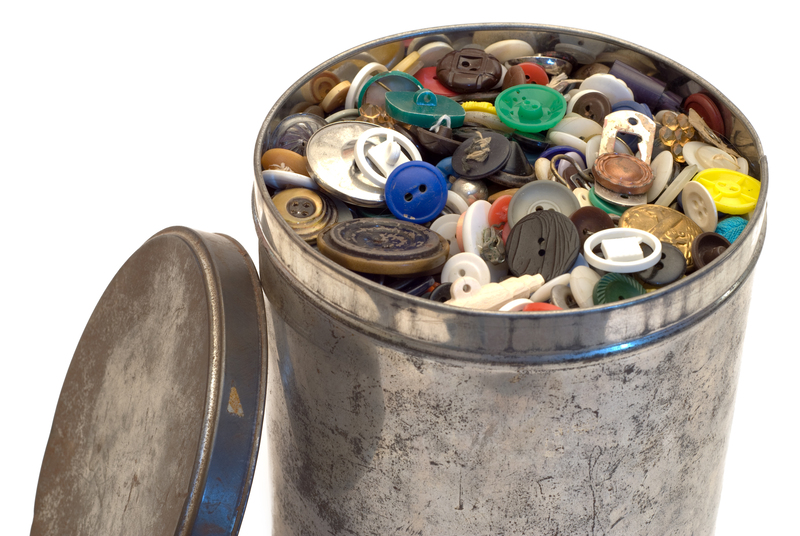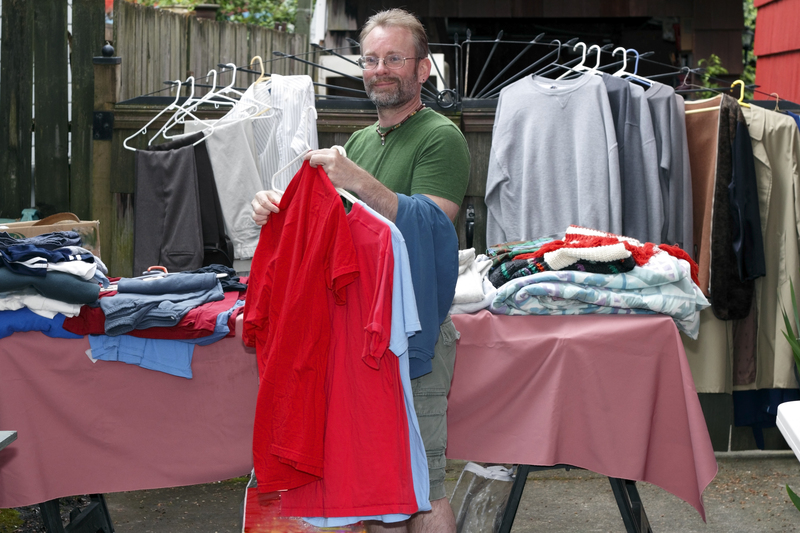The Right Way to Dispose of Used PPE Responsibly
The ongoing global pandemic and increased awareness around infectious diseases have made personal protective equipment (PPE) a part of our daily lives. While items such as masks, gloves, face shields, and gowns have become essential, disposing of used PPE responsibly remains a critical yet often overlooked aspect of environmental and health safety. In this comprehensive article, we delve into the best practices for responsible PPE disposal, what you should avoid, and how you can make a positive impact both locally and globally by making the right choices.

Understanding Why Proper PPE Disposal Matters
The inappropriate disposal of used PPE not only poses a risk to public health but also leads to severe environmental challenges. Since most PPE is made from plastic derivatives such as polypropylene, latex, and other synthetic materials, littering or improper waste management can result in:
- Pollution of natural habitats and water bodies
- Increased landfill waste
- Harm to wildlife who ingest or get entangled by discarded PPE
- Spread of infectious agents and disease to waste handlers and the community
Notably, single-use PPE presents a massive solid waste challenge globally. According to estimates, billions of disposable masks and gloves are used every month. Without responsible PPE waste management, this number can significantly contribute to the ongoing plastic pollution crisis. That's why understanding the right way to dispose of used PPE is urgent.
What Constitutes PPE: A Quick Overview
Before discussing disposal methods, it's important to clarify what items are considered PPE. The term refers to barriers and protective devices designed to shield the wearer from exposure to infectious agents or hazardous materials. Commonly used PPE includes:
- Face masks (surgical, N95, cloth masks)
- Gloves (nitrile, latex, vinyl)
- Face shields and goggles
- Respirators
- Protective gowns and aprons
- Shoe covers and head covers
After each use, these items can potentially become contaminated and should be handled with care during disposal to avoid cross-contamination or environmental damage.
Best Practices for Responsible PPE Disposal
Now, let's move on to the core of this article: a step-by-step guide to the right way to dispose of used PPE responsibly.
1. Segregate Used PPE from Regular Waste
- Always separate PPE from general household or workplace waste.
- If possible, dedicate a specific bin for used PPE disposal.
- Label the bin clearly as "PPE Waste" or "Biohazard Waste" for effective identification.
Important Tip: Never flush PPE items like masks or gloves down the toilet. These items can clog sewage systems and end up polluting rivers, seas, and oceans.
2. Properly Contain and Bag the PPE
- Place all used PPE waste in a sturdy, leak-proof bag (preferably a plastic or biohazard bag).
- Tie the bag securely to avoid accidental spillage during handling or transport.
- If the PPE is visibly soiled or contaminated (for example, used in medical settings), double-bagging is strongly advised.
3. Dispose of PPE at Designated Facilities
Do not throw PPE waste into public bins or along the roadside. Instead:
- Check with your local municipality regarding proper PPE disposal guidelines.
- Some cities or towns provide dedicated collection points or bins specifically for PPE waste.
- If you use PPE in a healthcare or workplace setting, be sure to use the specific medical waste bins provided.
4. Consideration for Reusable PPE
- If you use reusable masks or face shields, always follow the manufacturer's cleaning and disinfection protocols.
- Once reusable PPE reaches the end of its lifespan, treat it as regular PPE waste for disposal, following all the steps mentioned above.
5. Hand Hygiene Is Essential
After handling used PPE items, it is absolutely crucial to wash your hands thoroughly with soap and water, or use an alcohol-based hand sanitizer. This simple action helps significantly reduce the risk of contaminating yourself or others.
What Not to Do When Disposing of PPE
To truly protect public health and the environment, avoid the following common mistakes:
- Do not litter masks, gloves, or other PPE on streets, parks, or beaches.
- Do not place contaminated PPE in recycling bins, as it may pose health risks to recycling workers and can disrupt the recycling stream.
- Never burn used PPE in open air, as it releases toxic fumes and carcinogens.
- Do not attempt to reuse single-use PPE, as its protective barrier will be compromised.
Remember: Irresponsible disposal of PPE endangers waste collectors, spreads diseases, and contributes to the mounting global plastic pollution crisis.
Eco-Friendly PPE Disposal Options
While single-use PPE remains necessary in many situations, there are environmentally responsible actions and choices you can make to further minimize your impact:
1. Explore PPE Recycling Initiatives
- Several companies and organizations have launched programs focused on collecting and recycling masks and gloves. For example, the TerraCycle PPE Recycling Program in some regions allows individuals and organizations to return used PPE in special boxes for safe recycling.
- Check with your local authorities or environmental NGOs to see if similar programs are available in your area.
2. Consider Compostable or Biodegradable PPE
- Some manufacturers now offer biodegradable masks and gloves made from plant-based materials.
- Always verify proper disposal methods for these items, as true compostability may require industrial composting facilities.
3. Choose Reusable PPE Where Possible
- Reusable cloth masks and face shields, if properly sanitized, can significantly reduce waste.
- Ensure that reusable items are maintained carefully and replaced when no longer effective.
Global Regulations and Standards for PPE Disposal
Recognizing the risks associated with improper disposal, many governments and regulatory bodies have issued guidelines for safe PPE waste management. Here are some notable examples:
- The World Health Organization (WHO) recommends double-bagging used PPE and treating it as potentially hazardous infectious waste.
- The Centers for Disease Control and Prevention (CDC) urges households to bag used PPE before placing it in the trash and to avoid touching the face after handling.
- Many local health departments have implemented public campaigns about how to dispose of used PPE responsibly.
Compliance with local regulations is crucial. When in doubt, refer to your council's public health website for up-to-date PPE disposal protocols.
How You Can Help: Spreading Awareness and Taking Action
The collective effort of individuals, communities, and businesses is required to ensure we dispose of used PPE responsibly. Here's how you can make a difference:
- Educate others: Share facts and best practices on PPE disposal with friends, family, and colleagues.
- Participate in clean-up days: Join or organize local initiatives targeting PPE litter in public spaces.
- Support sustainable PPE alternatives: Advocate for and choose eco-friendly products whenever possible.
- Encourage authorities: Urge local officials to install more dedicated PPE disposal bins in public areas and transport stations.
- Protect waste handlers: Clearly bag and label PPE waste to safeguard essential workers in the waste management sector.
Special Considerations for Large Workplaces and Healthcare Settings
In healthcare environments and workplaces where large quantities of PPE are used daily, robust systems are critical for ensuring responsible disposal:
- Provide adequate color-coded bins for different types of waste (including infectious, general, and recyclable waste).
- Train staff on the importance of following protocols for donning, doffing, and discarding PPE.
- Contract with certified medical waste disposal companies to handle and treat hazardous waste safely.
- Perform regular audits to identify gaps or lapses in PPE waste management.
Note: Healthcare facilities should adhere to national or international infection control standards and specific disposal regulations for medical waste.

Innovations and Research in PPE Disposal
Researchers and engineers are actively seeking innovative ways to reduce the environmental impact of PPE waste. Some promising developments include:
- Thermal treatment technologies: Advanced incineration and pyrolysis methods that safely destroy pathogens and recover energy.
- Polymer recycling: Breaking down plastic PPE into reusable materials for construction or manufacturing.
- Biodegradable alternatives: Development of masks and gloves made from algae, starch, or cellulose.
- Community recycling campaigns: Grassroots initiatives collecting and processing PPE waste for safe recycling or energy production.
While these innovations are promising, individuals and organizations must still follow recommended disposal guidelines to bridge the gap between current waste levels and future solutions.
Summary: Practices for the Right Way to Dispose of Used PPE Responsibly
- Always segregate used PPE from regular and recyclable waste.
- Bag and tie off PPE securely before disposal.
- Use designated collection points or bins, and comply with local regulations.
- Never litter or recycle contaminated PPE.
- Opt for reusable, biodegradable, or responsibly produced PPE when possible.
- Spread awareness and support community or governmental safe disposal initiatives.
Ultimately, disposing of PPE responsibly is not only a matter of public health but also environmental stewardship. By following these guidelines and advocating for improvements, you can help reduce the impact of PPE waste and protect future generations.
If everyone adopts the right practices for disposing of used PPE responsibly, we can contain the spread of disease while also minimizing harm to our planet. Now is the time to act and lead by example!
